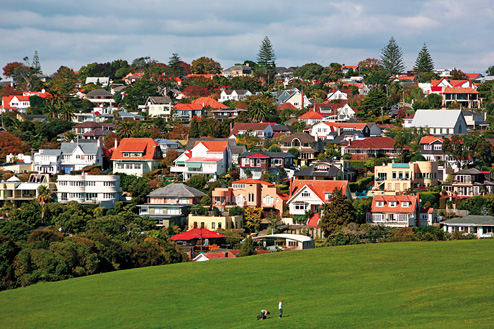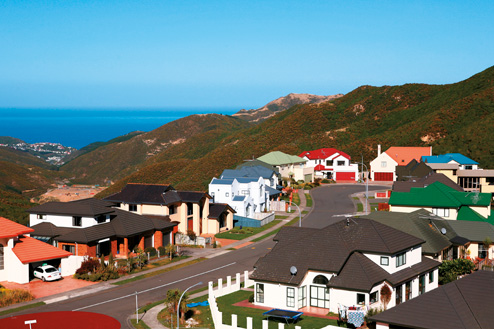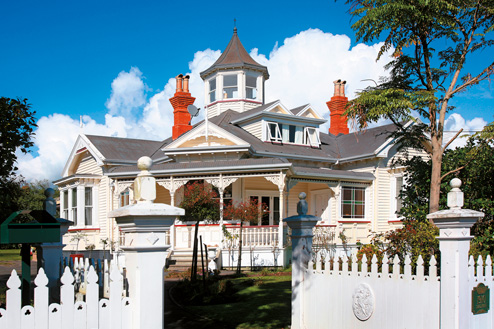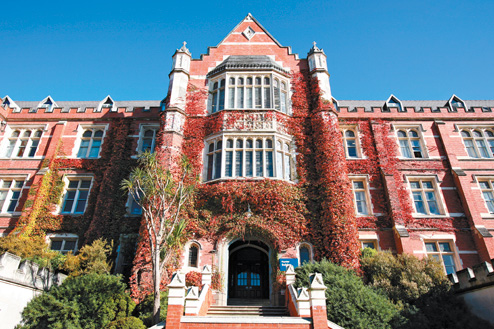Primary & Secondary Schools
In New Zealand children aged six to 16 must attend school. Most children actually start school when they are five. You don't need to wait until the beginning of a term or school year to start your child at school; most start on or very close to their fifth birthday. Schooling is free at state schools but parents are expected to meet some minor costs, including the cost of school books, stationery and uniforms. Costs vary widely depending on individual school requirements
Students are classified in year levels, beginning at 'Year 1' and moving up one class each year to the final 'Year 13'. Years 1 to 3 are often referred to as 'primers' or 'juniors' and Years 4 to 6 as 'standards'. Years 7 and 8 are known as 'forms 1 and 2' and Years 9 to 13 as 'forms 3 to 7'. Class sizes are set by the school in accordance with Ministry of Education guidelines. Some junior classes may include children of different ages and year levels in the same classroom. Students 16 years and over may choose not to finish their secondary education and leave in Year 11 or 12. By contrast, students can also attend school until the end of the year in which they reach 19 years of age if they choose. State schools are co-educational at primary and intermediate level. although some schools have been experimenting with offering single-sex classes at intermediate levels because of concerns that boys learn better when they are not in the same class as girls. At secondary level, a single-sex education is available through the State but you may have to move "in-zone'' to get it. If your child is not yet 16 but wants to leave school you can apply to the Ministry of Education for a special exemption and these are normally granted if your child is going onto work or another form of training.
A strong emphasis is placed on sport and physical activity at New Zealand schools and even in heavily built-up urban areas most schools have large playgrounds and sports field.
Children must be enrolled at primary school by their sixth birthday. You can opt to home-school your children but you will still need to register with the Ministry of Education. Many schools have waiting lists so you should pre-enrol children before their fifth birthday. Depending on local options, children in their seventh and eighth years will either continue to attend primary school or move to a separate intermediate school till they are ready to start secondary school.
From age 12 or 13 through to 17 or 18 (Year 9 to Year 13), students attend secondary school (also known as high school or college). Students are usually grouped in form classes, but generally have different teachers and go to different classrooms for different subject. Some secondary schools enrol students early and it is advisable to contact schools at least six months before the official enrolment date. The main qualification students work towards is the National Certificate in Educational Achievement.
Students generally need to obtain this to gain entry into university.
In rural areas where there are only small numbers of school-aged children it is common to find area or composite schools which combine primary, intermediate and secondary schooling in one location.
The Education Review Office monitors the performance of schools in New Zealand, auditing them at least once every three years. Copies of their reports are public and can be found on their website www.ero.govt.nz. You can search for schools by location. While this is a good place to start searching for a school for your child, also take the time to visit schools in your area and talk to other parents.
Students are classified in year levels, beginning at 'Year 1' and moving up one class each year to the final 'Year 13'. Years 1 to 3 are often referred to as 'primers' or 'juniors' and Years 4 to 6 as 'standards'. Years 7 and 8 are known as 'forms 1 and 2' and Years 9 to 13 as 'forms 3 to 7'. Class sizes are set by the school in accordance with Ministry of Education guidelines. Some junior classes may include children of different ages and year levels in the same classroom. Students 16 years and over may choose not to finish their secondary education and leave in Year 11 or 12. By contrast, students can also attend school until the end of the year in which they reach 19 years of age if they choose. State schools are co-educational at primary and intermediate level. although some schools have been experimenting with offering single-sex classes at intermediate levels because of concerns that boys learn better when they are not in the same class as girls. At secondary level, a single-sex education is available through the State but you may have to move "in-zone'' to get it. If your child is not yet 16 but wants to leave school you can apply to the Ministry of Education for a special exemption and these are normally granted if your child is going onto work or another form of training.
A strong emphasis is placed on sport and physical activity at New Zealand schools and even in heavily built-up urban areas most schools have large playgrounds and sports field.
Children must be enrolled at primary school by their sixth birthday. You can opt to home-school your children but you will still need to register with the Ministry of Education. Many schools have waiting lists so you should pre-enrol children before their fifth birthday. Depending on local options, children in their seventh and eighth years will either continue to attend primary school or move to a separate intermediate school till they are ready to start secondary school.
From age 12 or 13 through to 17 or 18 (Year 9 to Year 13), students attend secondary school (also known as high school or college). Students are usually grouped in form classes, but generally have different teachers and go to different classrooms for different subject. Some secondary schools enrol students early and it is advisable to contact schools at least six months before the official enrolment date. The main qualification students work towards is the National Certificate in Educational Achievement.
Students generally need to obtain this to gain entry into university.
In rural areas where there are only small numbers of school-aged children it is common to find area or composite schools which combine primary, intermediate and secondary schooling in one location.
The Education Review Office monitors the performance of schools in New Zealand, auditing them at least once every three years. Copies of their reports are public and can be found on their website www.ero.govt.nz. You can search for schools by location. While this is a good place to start searching for a school for your child, also take the time to visit schools in your area and talk to other parents.













